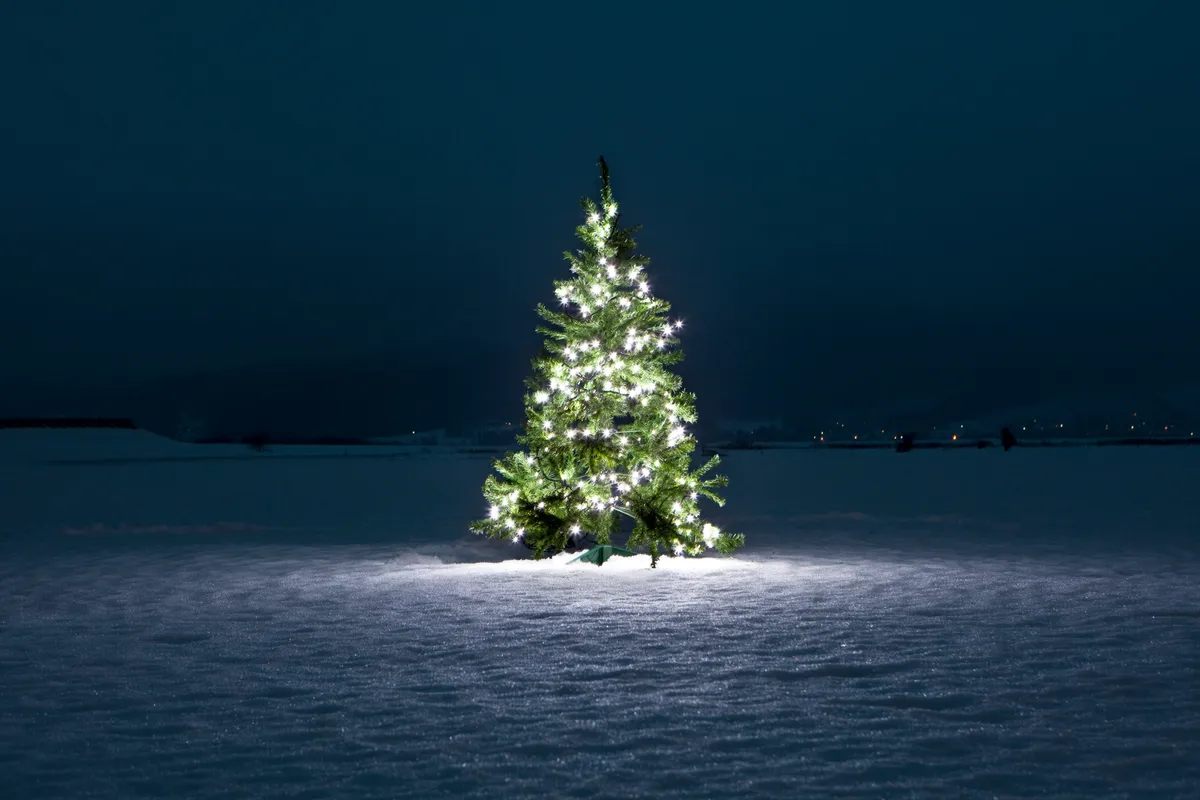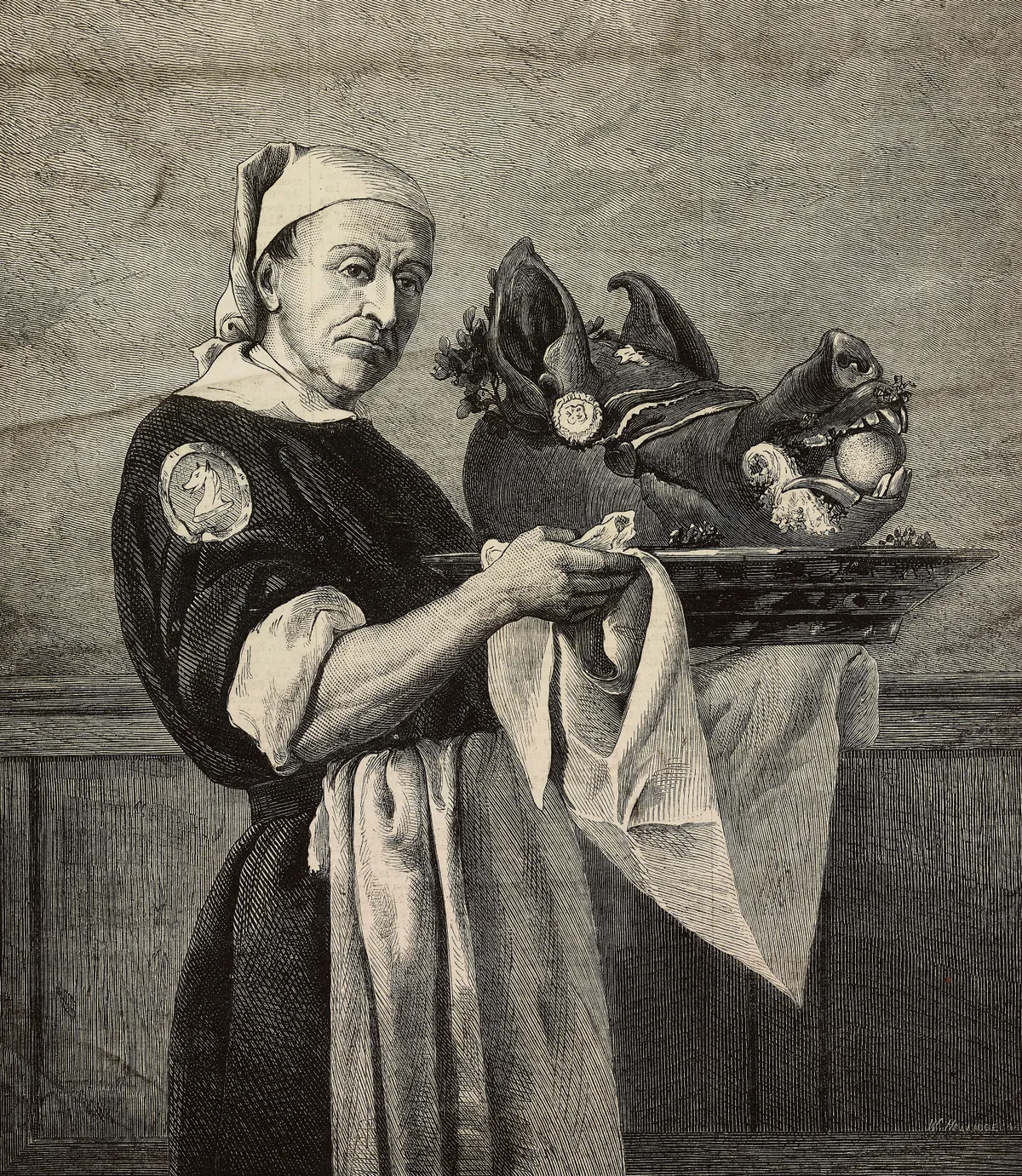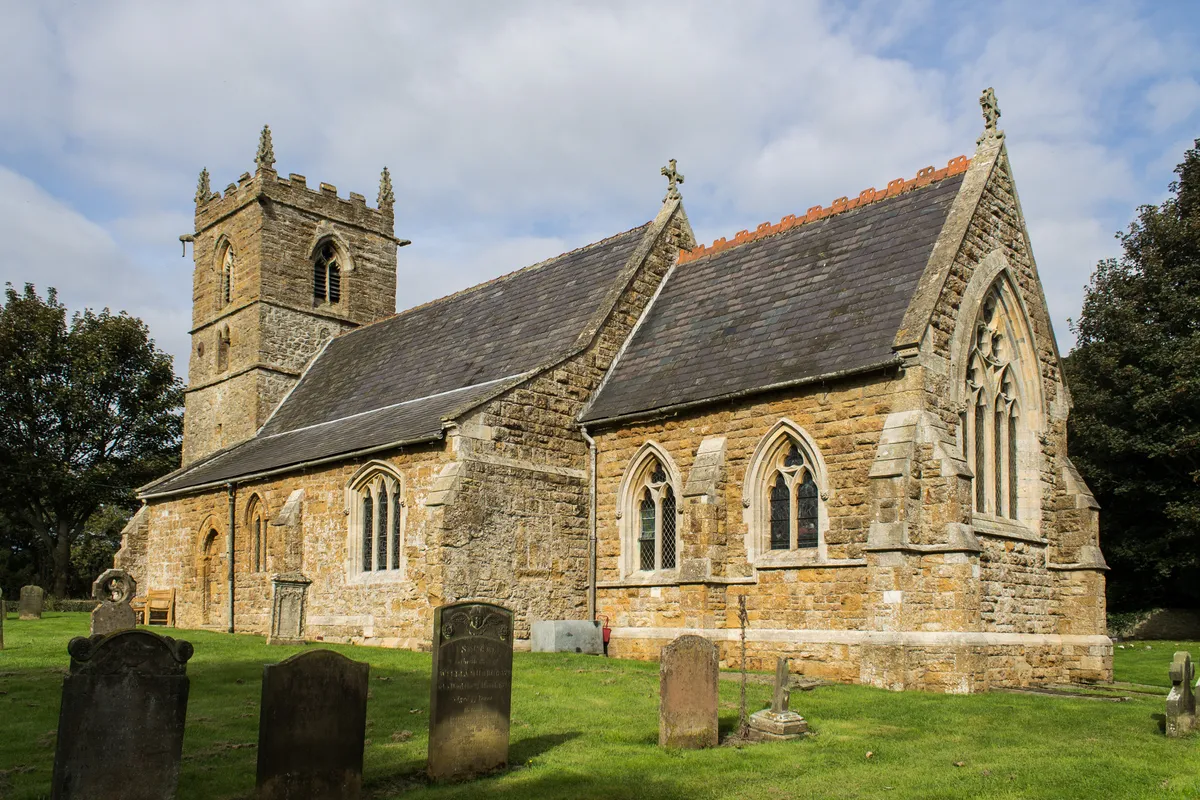From winter walks and decorating the tree to kissing under the mistletoe, Christmas is filled with long-held traditions from pagan and the rise of Christianity. But why do we send Christmas cards? And who first made a Christmas pudding?
Christmas has a long history in the UK, but we have the Victorians to thank for many of our most loved festive traditions, including sending cards and decorating Christmas trees. In fact, before the 19th century, Christmas was barely celebrated in Britain.
Today, it is common to see a twinkling Christmas tree and natural decorations such as holly, ivy and mistletoe in British homes.
Learn more about British Christmas celebrations and their origins – including some lesser-known weird and wonderful traditions – in our guide.
History of Christmas
What is the history of British Christmas celebrations?
Lord of Misrule is a a historic figure who was central to British Christmas celebrations until the Puritans managed to ban the festive season in the 17th century. The Lord of Misrule was an elected individual who was charged with coordinating the seasonal revels of the Tudor court and in houses of nobility across the kingdom until Twelfth Night. At that time, the festive period saw servants and the poor given food boxes, and there was much drunkenness and celebrating. The concept of misrule celebrated this annual reversal of traditional social groups. In Scotland, the Abbot of Unreason played a similar role.

How did the Victorians celebrate Christmas?
Much of our understanding of a merrie old English Christmas has more to do with the writings of Charles Dickens or Washington Irving than our real medieval ancestors. For the early Victorians, Christmas was an antiquated curiosity, but one that the English bourgeoisie were beginning to remember. Dickens’s A Christmas Carol is more an idealised romance based on his own childhood memory rather than a chronicle of what was happening at the time. But when the Victorians did rediscover Christmas, they couldn’t stop themselves and soon we had Christmas cards, crackers and the sense that Christmas was a time for family. And, as Tiny Tim observed: “God bless us, every one.”

When did Christmas become Xmas?
The first examples of the abbreviation Xmas being used can be found in 15th century ecclesiastical writings. The X originally represented the first letter of the Greek word Xριστóς, meaning Christ. Of course, its prominence in the 20th century probably had more to do with the fact that Xmas has the same amount of letters as the word sale.

History of Christmas decorations
Why do we have Christmas trees?
The Christmas tree was first introduced to the UK in 1800 by the wife of King George III, Queen Charlotte, who brought the tradition from her native Germany, where it was common custom to have a Christmas tree in your home. She requested a yew tree be brought to Queen’s Lodge in Windsor, which she decorated herself.

- How to choose the perfect Christmas tree and homemade decoration ideas
- Should we still be cutting down trees for Christmas
- How to use your old Christmas tree in the garden
Why is mistletoe hung at Christmas?
Before it became a romantic symbol, mistletoe was considered so sacred in ancient Britain that it could only be cut by druids with a golden sickle. The plant had connotations of peace, and people who met underneath it were forbidden from fighting, even if they were bitter enemies. Homes decorated with mistletoe offered shelter and protection to anyone who entered.
Even to this day it is very rare to see a sprig of mistletoe inside a church, thanks to its Pagan leanings. To the druids of the old religions it was a potent symbol of fertility, and the Greeks and the Romans regularly parleyed peace beneath its boughs. From the Middle Ages our ancestors hung it above the threshold to ward off evil spirits, although the Victorians helped give the plant its modern, lip-smacking tradition. In the UK, the main mistletoe event of the year is the Tenbury Wells Mistletoe Festival in Worcestershire.

Where is the oldest Christmas tree?
Wrest Park in Bedfordshire is believed to be the site of the world’s oldest surviving Christmas tree. Planted in 1856 by Thomas de Grey, the tree was brought into the mansion every year and decorated for the family’s festivities, and then re-planted in the park once the holiday was over. Eventually the tree grew too big to be moved and now stays out in the park all year round. However, English Heritage (who own the site) have previously revived the tradition of decorating it.
Why is holly associated with Christmas?
The barbed leaves and red berries of the holly plant have long been identified with eternal life and protection in Great Britain. At first the Christian church took a disapproving stance to holly, forbidding it from appearing in churches, but the spiky leaves still appeared in people’s houses, as the red of the berries was thought to ward off witches. In the face of such popularity, the custom was sanctified, the leaves taken to represent Christ’s crown of thorns, and the berries His blood. Of course, special care had to be taken with such a powerful and lucky plant and so the old decorations, which were traditionally taken down on Candlemas (2nd February), were never thrown away, but burnt.

Why is ivy associated with Christmas?
Ivy was the 'female' plant to the 'male' holly, and another symbol of everlasting life and resurrection. Interestingly the plant, now seen in a somewhat friendly light, was originally mistrusted. Folklore claimed that the vine could bring on madness and intoxication. In many counties, such as Northamptonshire, it had to be countered with the beneficial holly: decorating your home with ivy alone brought bad luck in droves. Once again, you also had to be very careful about how you disposed of the ivy, but ever-pragmatic farmers used to feed the withered decorations to their cattle.

When was the first Christmas card sent?
In 1843, John Calcott Horsley sent the first printed Christmas card for his friend Sir Henry Cole.
The card caused some controversy at the time because it depicted a small child drinking wine, but in spite of this, the idea of sending festive cards soon caught on. One of 12 surviving cards from the original print run, sent by Henry Cole to his grandmother, was sold for £20,000 in 2001.

Who was the real Father Christmas?
St Nicholas, a 4th century archbishop in what is now Turkey, is the patron saint of girls and boys thanks to various stories of his miracles raising children from the dead, saving girls from sex work and giving presents. Over the years, in Britain he has become associated with the figure we now know as Father Christmas and, for the last 150 years, the Americanised Santa Claus.
The figure of Father Christmas first appeared during the 1650s, when the Puritans banned the festive season. The wise old man appeared on pamphlets praising the revels of the past above the gloom of the present day. However, it was only during the Victorian period that this rather obscure figure from folklore took on the prominence that we know today and began being identified as a gift-giver. St Nicholas was added to the mix in 1822 when Clement C Moore drew in the legends of St Nick in his poem T’was The Night Before Christmas, which led to the creation of the modern Santa Claus.

How did the robin redbreast become associated with Christmas?
The robin is surrounded by folklore. In some old country traditions, robins arrived in the stable soon after Jesus was born and, while Joseph was gathering wood, fanned the dying fire with their wings to keep it alight. The Virgin Mary awarded them with their fiery breast as a reward. In old British religions, the Holly King of Winter – a wren – was killed by the Oak King of Summer – a robin – on the winter solstice. On the summer solstice, the Holly King had his revenge.

Traditional Christmas food and drink
Why do we eat mince pies?
For good luck, British tradition recommends that everyone should eat a mince pie on each of the twelve days of Christmas. Tradition states that anyone who refuses one of their twelve pies will suffer a year of misfortune (you have been warned!).
Treat your friends and family to a mince pie this Christmas with this easy stollen mince pie recipe.

Why is turkey eaten on Christmas Day?
In the Victorian era, birds raised in East Anglia were often herded along Drovers’ roads to London to be sold fresh in time for Christmas. Daniel Defoe recorded that 150,000 turkeys were driven from East Anglia to London each year, a journey that took three months to complete. To protect their feet, turkeys were fitted with leather or sacking boots, while geese had theirs tarred and sanded.
In London itself, many working-class citizens banded together to form ‘goose clubs’ as a way to make the Christmas meal more affordable. Each individual paid a few pence a week towards the purchase, which was then shared out between them.

Crispy bacon-basted turkey recipe
Make Christmas dinner even more special with our top tips for the juiciest meat ever, infused with smoky goodness from an indulgent bacon butter baste.

Jough-Y-Nollick
The jough-y nollick (literally the ‘drink of Christmas’) was a special yuletide tipple on the Isle of Man. The drink would be brewed in a giant kettle that would be taken around the entire neighbourhood.
Twelfth Night cake
Up to the turn of the 20th century, every household in England tucked into Twelfth cake, which contained a dried pea in one half and a bean in the other. The men of the house, master and servant alike, were given a slice from the bean half and the ladies a slice from the pea side. If a chap found the bean he was king for the night and the girl who found the pea was queen. In houses of lesser fortune, finding the bean or pea was considered a symbol of luck for the year.

Plum pudding
The familiar Christmas pudding descended from plum porridge, a mutton and beef broth thickened with currants, raisins, wine, spices and prunes and eaten with the main meat course on Christmas Day. By the early 19th century, meat had vanished from the recipe and the dish had solidified into today’s pudding. Traditionally the pudding is prepared on Stir-Up Sunday, the last Sunday before advent; the cook taking care to stir clockwise in honour of the Magi’s journey from east to west to see Jesus.

Stargazy pie: Tom Bawcock’s Eve
On 23rd December in Mousehole, Cornwall, a brave fisherman by the name of Tom Bawcock took to the sea when the storms had prevented anyone going out to risk a catch. With no food for Christmas, the villagers cheered when Tom returned from the tempest with enough fishy fare for everyone. Today, the inhabitants of Mousehole eat stargazy pie, in which the pilchards’ heads poke out of the pastry crust, in honour of his bravery.

Ashen faggot
This West Country tradition, which still takes place in pubs across Somerset and Devon, is a localised version of the Yule log and has strong Pagan connotations. Originally a fertility rite, the faggot is a bundle of green ash sticks bound together with nine bands of hazel. On Christmas Eve, it is burnt on a fire created by the last remnants of last year’s faggot. When each band breaks in the homes, a toast goes up and cider is glugged. Over time, many of the traditions from old religions were Christianised, and this is no different; the use of the ash was sanctified to represent the wood Mary used to warm the infant Jesus.
Boar’s head
For a medieval lord, no Christmas dinner was complete without the entrance of the boar’s head, presented with an orange or apple in its mouth. The tradition came to Britain with the Viking invaders, where it was served in honour of the heroes of Valhalla and in praise of the Sun Boar. Today the tradition carries on at Queen’s College Oxford, with the boar’s head being presented on the same silver platter as it has been since 1668 and accompanied with a special rendition of the Boar’s Head Carol. On completing the song, the soloist is presented with the fruit from the beast’s mouth.

What is St Thomas's Day?
It was traditional on 21st December, or St Thomas’s Day, for the poor women of a village to move from door to door, asking for doles of money or food to give their impoverished households a merry Christmas. The custom began to die out in the mid-19th century, although the act of other customs associated with the day survived longer. Unmarried maids used to peel an onion on the 21st December and leave it, wrapped in cloth, under their pillow. If lucky, the divination would reveal their future husband in a special Christmas dream.

Compulsory church attendance: Holy Days and Fasting Act of 1551
In England, the Holy Days and Fasting Days Act of 1551 stated that every citizen must attend a church service on Christmas Day, and must not use any kind of vehicle to get to the service. It is unclear whether this law was designed to remind the wealthy of those less fortunate by forcing them to attend on foot, or whether it was simply an effort to avoid traffic jams as a result of universal attendance. As this act has not yet been repealed, there must be a large number of us who are breaking the law every 25th December!

Why do we celebrate Boxing Day?
Boxing Day is a British tradition which follows Christmas Day. It began sometime in the 1800s when Christmas gifts were received in a ‘Christmas box’. The following day, wealthier classes would fill the box with gifts to give to the poor – often servants and staff from their home who would traditionally be given Boxing Day off as a holiday. Alternatively, the box would be donated to a local church to help poorer people.
The feast of St Stephen is now known as Boxing Day thanks to the tradition of tradesmen calling on anyone who had employed them in the previous year to collect a monetary gift placed in special Christmas boxes.
The great Boxing Day walk
It's often traditional to go for a walk on Boxing Day, but the origins of it remain unclear. Perhaps after the stresses and indulgences of the festive season, a bracing walk to blow away the cobwebs is what's needed. Many sports fixtures also take place on the day, so make sure you don't miss your favourite team kick off!

Quirky Christmas customs and events
In Britain, there are hundreds of Christmas customs, and many of the traditions we know now have unusual beginnings.
Christmas Day and Boxing Day swim
For those who don’t find December cold enough for their liking, there's always the option of a bracing sea swim. The 100-yard swim in Hyde Park’s Serpentine Lake on Christmas morning (temperatures usually below 4ºC!) dates back to 1864, but in 1904 playwright J.M Barrie donated a prize cup, and the event has been known as the ‘Peter Pan Swim’ ever since. (Participation in the race is only open to members of the Serpentine Swimming Club, but there is no charge to spectate.)
Nowadays, many Christmas Day and Boxing Day swims raise money for charity.

What is the Tar Bar'l festival?
Head up to Allendale in Northumberland on New Years Eve to take part in the Tar Bar'l (Barrel) festival. The origins of the festival are unclear, but today locals and visitors alike (men only, unfortunately) parade through the streets in fancy dress, carrying barrels of flaming tar on their heads.
After processing round the village they return to the square at midnight and throw their barrels onto the waiting bonfire to ignite it, and welcome in the new year in style. (Northumberland Fire and Rescue are on standby, just in case.)

What is the Mari Lwyd?
Mari Lwyd is a Welsh tradition that had almost died out, but is now being revived by students at the University of Wales. The tradition consists of a model horse’s skull being carried from door-to door on a pole by a young man, accompanied by his friends; Sergeant, Merryman, Punch and Judy. At each house the team recites a series of ‘impromptu’ verses begging admittance, while the occupants refuse (also in verse). Once the visitors inevitably win the contest and gain admittance, the Mari chases the young ladies, Judy pretends to clean the house and Punch engages in all kinds of mischief until they are offered food and drink to pacify them. Once they have feasted, they go to the next house and begin all over again.

What is the Devil's Knell?
Since the 1400s, Dewsbury in West Yorkshire has rung to the sound of the parish church’s bells tolling once for every year since Christ was born, to remind Satan that Christmas symbolises the beginning of his end. In the last century, the only times the knell hasn’t been tolled is on the rare occasions when the bells were being cast or during the Second World War, when all church bells were silenced.

What is the Old Tup tradition?
Old Tup is a folk song about a monumental ram. It’s been sung throughout the country, but in the Sheffield area, the ditty developed into a Christmas tradition where boys created a hobby horse and paraded through the streets. Other Christmas hobby horses include the hooden horse of east Kent and the macabre Mari Lwyd, a horse’s skull bedecked with false eyes that is carried around Llangynwyd, Glamorgan, to this day.
What is Twelfth Night?
The Eve of Epiphany or Twelfth Night was the traditional end of the festive season, and even as recently as the Victorian period was a time for one last party. The only real hangover from Twelfth Night is the modern superstition that you need to get your Christmas decorations down by 6th January.
However, for the villagers of Haxey in Lincolnshire, the revels still continue in the form of the Haxey Hood. The men of the village battle it out with their neighbours from Westwoodside to get or sway the hood – a piece of ribbon bound with leather – to either a pub in Haxey or Westwoodside. The custom comes from a story that 700 years ago a group of labourers competed to return the hood of the wife of the local landowner after it had blown from her head and begins with the ritual of the foot being smoked.

What is wassailing?
One of the oldest festive traditions, the term wassail comes from the Anglo-Saxon waes haeil, meaning to be whole or healthy. Farm workers would visit the Apple Tree Man, the orchard’s most prolific cropper, and pour cider over its roots while singing a toast to the tree.
While this custom – which has seen somewhat of a revival in recent years – took place on Twelfth Night, there was also another wassailing festive tradition, which did not involve trees. This custom saw carol singers take with them a wassail cup, which they expected to be filled with drink in return for the song 'Here we come a wassailing, Among the leaves so green.'

More UK traditions and folklore:




